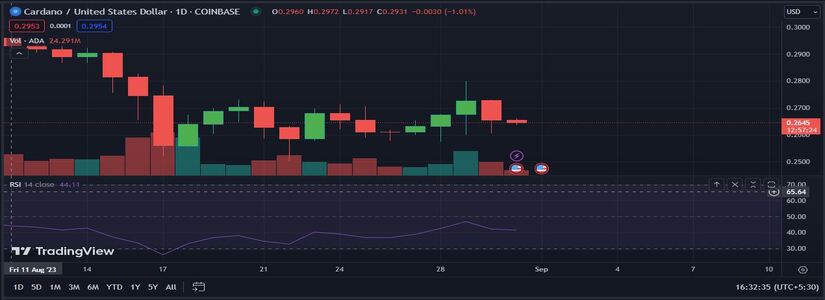Cardano (ADA) prices continue to bleed despite adding a host of new features and witnessing a substantial uptick in its user base with the number of new unique wallet addresses, over the past five months.
As per the data from Cardano Blockchain Insights, the number of new unique wallet addresses on the ADA network has grown 6% since April 1, going from 4.02 million wallets to 4.26 million wallets on August 29. The number of delegators also increased by 30,000 in this period.
For the unversed, delegators are token holders who cannot, or do not want to run a validator node themselves. Instead, they secure the network by delegating their stake to validator nodes and play a critical role in the system, as they are responsible for choosing validators.
Cardano Unique Wallet Addresses Surges
Over the course of these three months, the Cardano (ADA) network registered an average growth of 1,600 new wallets per day with June 10, recording the highest number of new wallets created. As per the data from Cardano Blockchain Insights, close to a staggering 4,000 new wallet addresses were created on that particular day.

On the other hand, July 18 proved to be one of the worst days for the Cardano network with only one new wallet registered. In the same time period from April to August, Cardano’s native token ADA tanked from a price of $0.40 on April 1, to $0.26, marking a nearly 35% drop in valuation.
It can be observed that over the past few days, ADA’s price saw a fresh decline from well above $0.288. The price traded below the $0.285 and $0.280 support levels to move into a bearish zone. According to CoinMarketCap, ADA is down 0.33% in the last 24 hours to currently trade at $0.26.
Meanwhile, the digital asset plunged more than 1% over the past seven days. Market experts suggest If the bearish momentum continues, the prices could plunge the altcoin’s value to $0.238, followed by $0.2.

ADA Suffers Despite Network Improvements
The downturn comes in spite of a string of new developments in the Cardano ecosystem such as the much-hyped “Mithril,” upgrade that was released on July 30 in an effort to enhance the speed and efficiency of node syncing times on the Cardano (ADA) mainnet.
Furthermore, since the beginning of this year, Cardano makers have put in ambitious efforts to bolster adoption as well as bring in several changes to the network. On April 11, ADA maker Input Output Global (IOG) launched Lace 1.0, the network’s first lightweight wallet solution, on the mainnet.
In May, Cardano (ADA) devs launched an open-source toolset allowing any user to develop apps, called ‘”Marlowe.” The toolkit offers the community a simple way to create smart contracts and dApps without the need for programming skills or experience with coding.
It's almost as if eutxo, native assets, and Plutus are a good idea or something? https://t.co/PEnKgQgcpV
— Charles Hoskinson (@IOHK_Charles) August 1, 2023
Not just network upgrades, but recently, Charles Hoskinson, the founder of Cardano (ADA), highlighted the financial advantage of ADA over Ethereum (ETH) regarding transaction costs. On August 1, Hoskinson claimed a transaction of 56 assets on the Cardano (ADA) network cost just $0.14, a fee he says, could never be matched by Ethereum (ETH).



